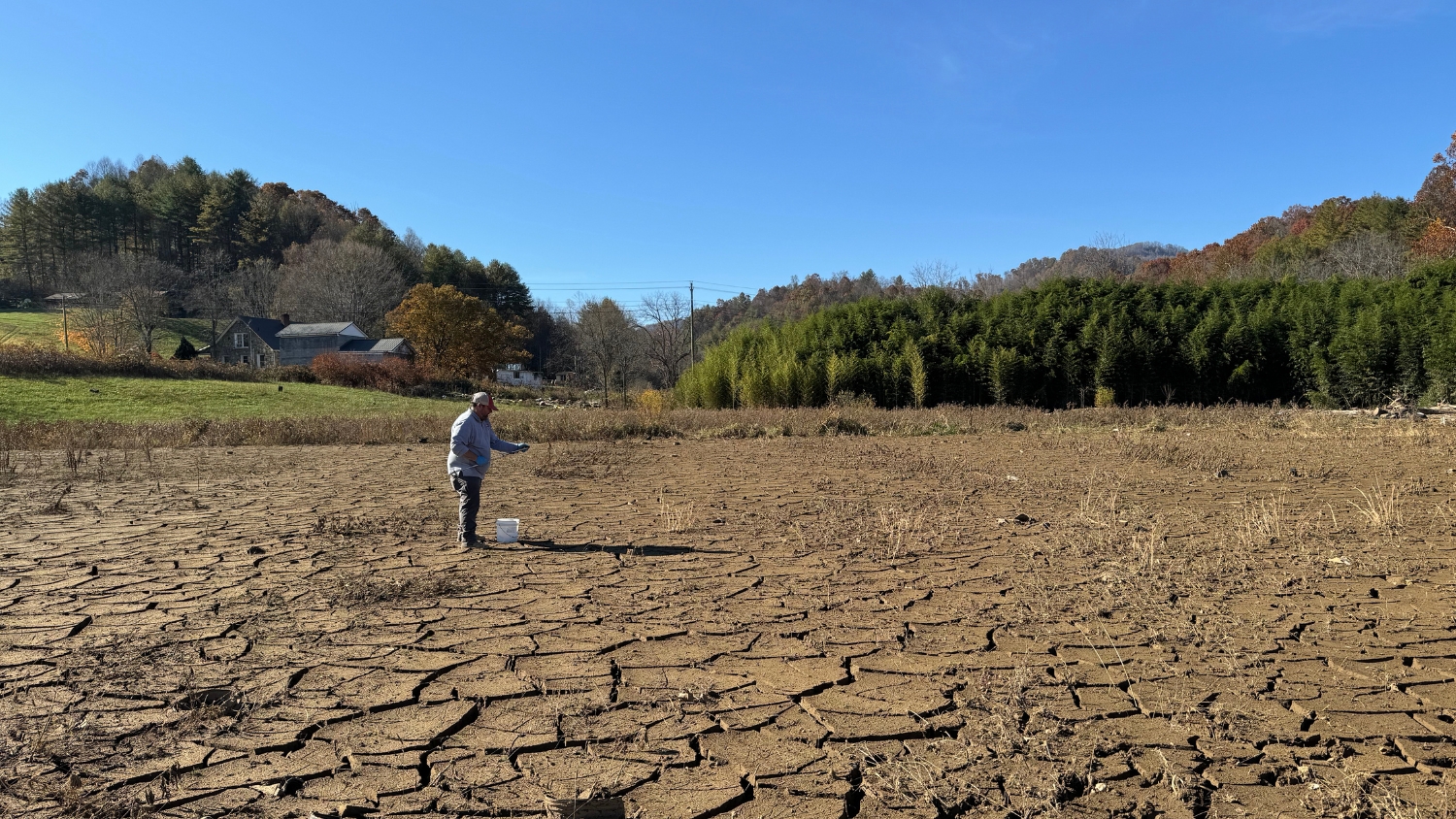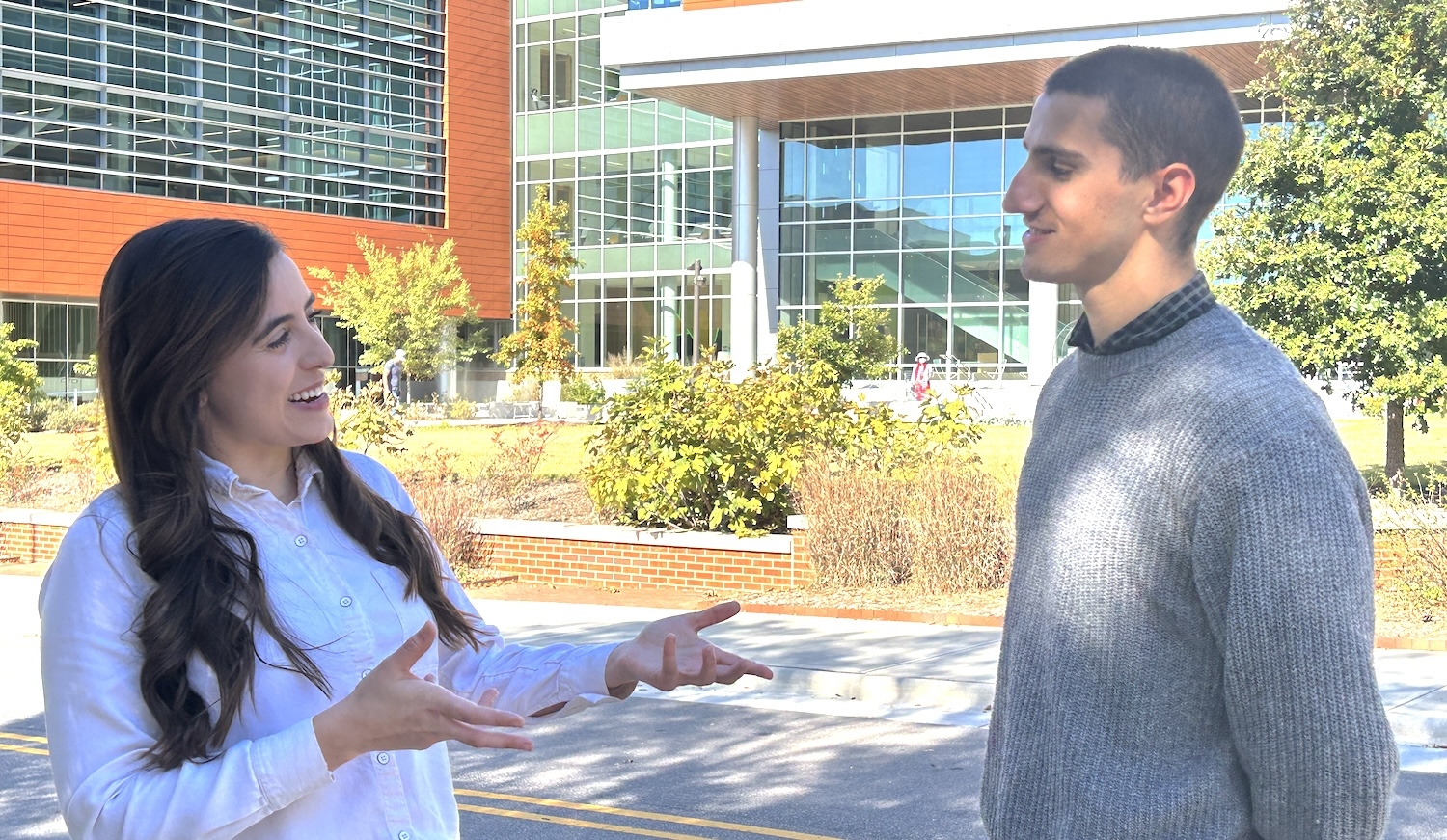Students Think and Dig Around New Kilgore Hall Arbor
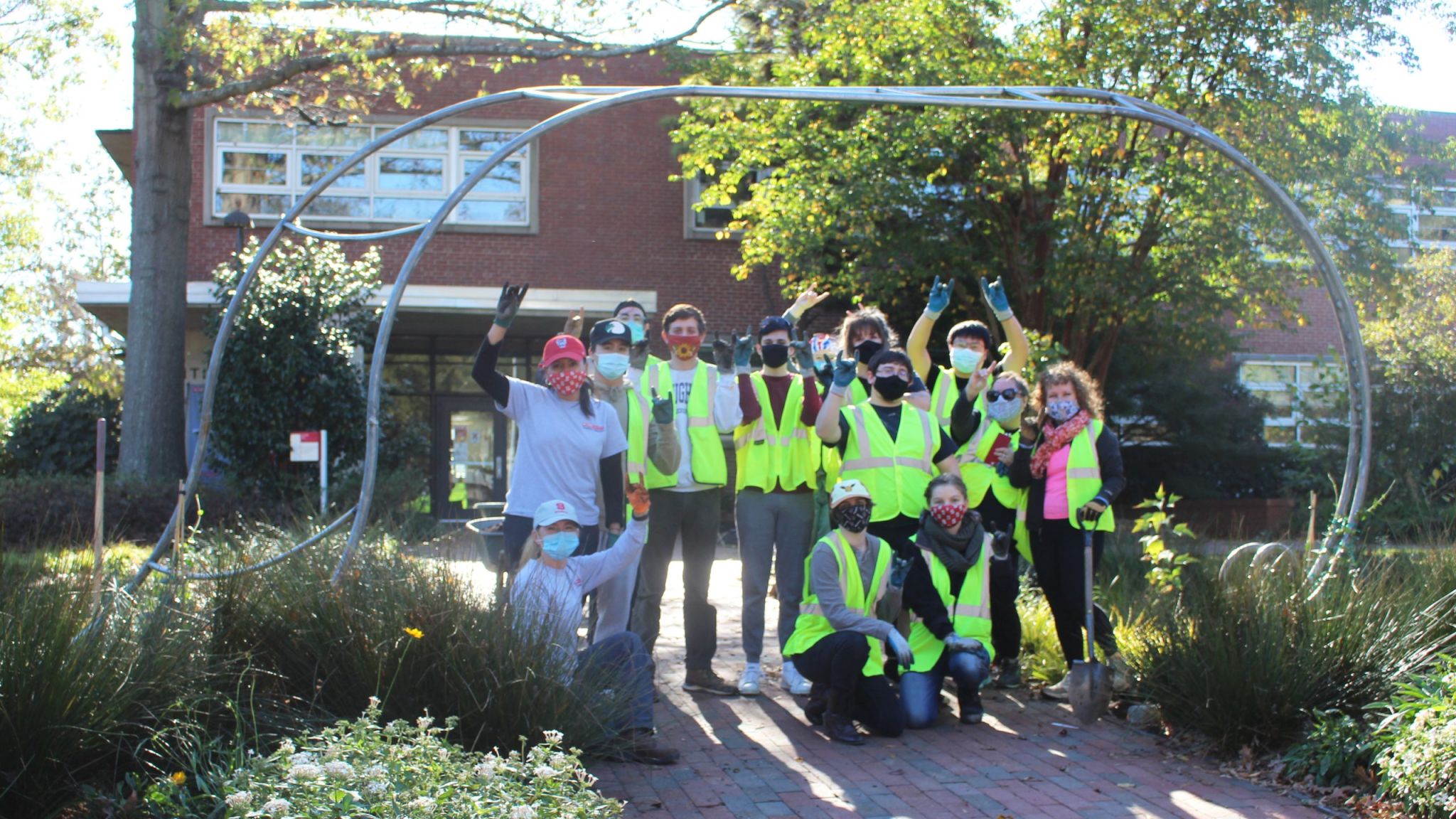
Playing on NC State University’s “Think and Do” motto, horticultural science associate professor Julieta Sherk calls her undergraduate Landscape Design/Build class “Think and Dig,” a term coined by student Lian Farruggio.
On a November afternoon, that’s what her students did, installing plants around a new arbor they helped Sherk and co-instructor Dallas Bretzman design. The arbor acts as an artful threshold, complementing and extending rain gardens that last year’s Design/Build class developed in front of Kilgore Hall.
The arbor resembles spirals seen in nature – in Nautilus shells and spiral galaxies, for example.
The arbor arches over an eight-foot brick walkway that leads from a Founders Drive bus stop to the building’s front entrance. It was made to resemble logarithmic spirals seen in – in Nautilus shells, spiral galaxies and the seed-filled centers of sunflowers, for example.
The shape was chosen to complement the spirals incorporated in the rain gardens, which infiltrate water from heavy rains into the soil, keeping the stormwater from running off into the street.
The arbor also carries forward the intention of environmental stewardship and sustainability that inspired the rain gardens: It’s built of recycled metal from an arbor recently removed from neighboring Scott Hall. Bretzman said that if the metal not been refabricated, it likely would have ended up in a construction landfill.
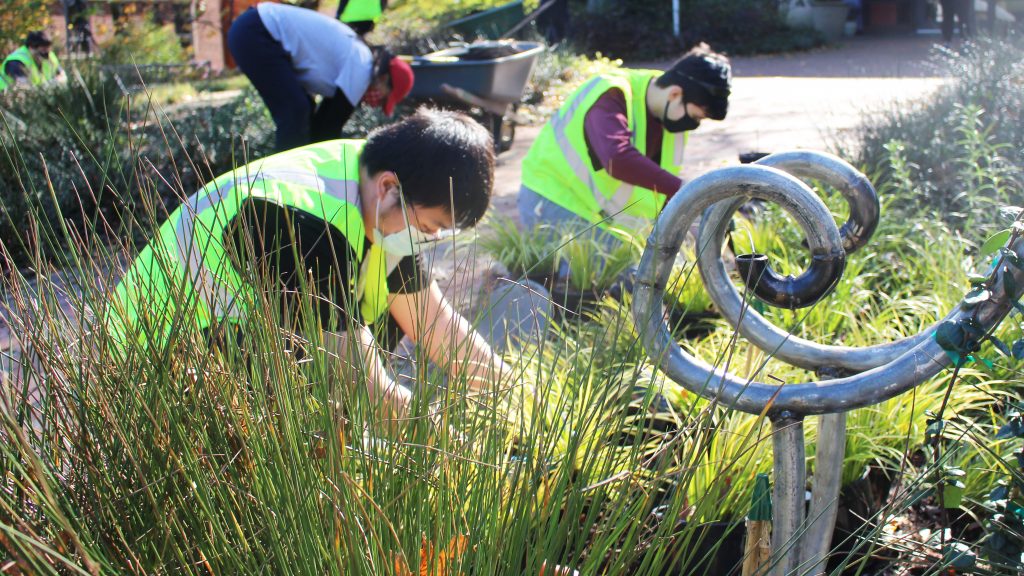
A Collaborative Effort
For Sherk, the rain gardens provide glimpses into unique aspects of NC State’s horticultural science program. There are giant elephant ear leaves that students grew in the greenhouse management class and curly juncus and white pentas left over from faculty research. There are even redbuds and butterfly bushes bred by Distinguished Professor Emeritus Dennis Werner.
The area around the arbor will feature red passion flower and honeysuckle as well as white star jasmine.
The Design/Build students wanted red and white to dominate the landscape, so the planting around the arbor will feature red Lady Margaret passion flower, the red honeysuckle Major Wheeler and white star jasmine.
Each student in the class designed their own version of the arbor, preparing construction documents and cost estimates and sharing them with professional guest reviewers and others in the class.
“There were students who were interested in attracting bees. Others had artful ideas that incorporated poetry and songs. One arbor had more of a Japanese look, one revolved around the vine, and one had a green roof,” Sherk says. “So really the sky was the limit.”
As the students made progress on their designs, Sherk and Bretzman modeled the critical thinking design process by developing a composite of student and ideas and coordinating the arbor’s construction. They reached out to stakeholders to get ideas, approvals and buy-in and to find funding and donations to make the arbor possible.

Overcoming Pandemic Challenges
The two had little experience teaching remotely, which made online instruction of such a hands-on class a “daunting task,” Sherk said. But Bretzman and Sherk had taken part in an online learning conference, and they used what they’d learned to make the class as interactive as possible. They incorporated online breakout rooms and jamboards that allowed students to collaborate online. They encouraged students to take part in exercises aimed at lifting their energy and helping them make social connections. And they conducted weekly surveys to gauge the students’ moods and to gather feedback on what was working in the class and what wasn’t.
“We invited comments, and as a result we were able to fix some things that weren’t going well. We were able to switch things up midstream,” Bretzman said.
To the coordination of the project, Bretzman brought connections to the university’s facilities division, where she’d previously worked. She said the division proved to be a powerful partner in the project nearly every step of the way.
She and Sherk especially praised the creativity and perseverance of Mark Rose and James Beasley with the fabrication shop. They crafted the arbor from the scraps of curved pipes that made up the Scott Hall Arbor. After reshaping the metal, they used wire brushes to remove white paint, giving the structure an industrial look.
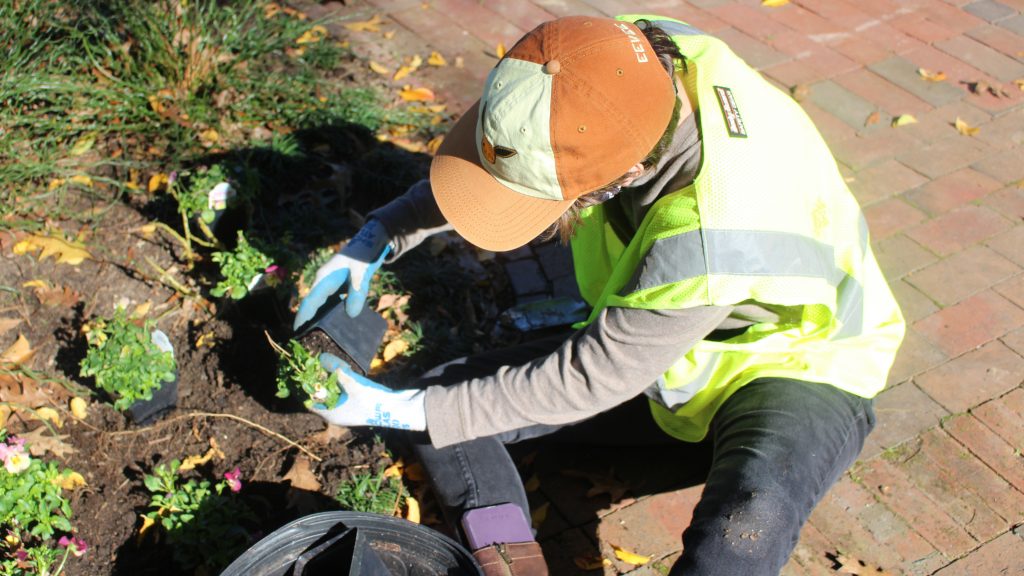
‘All the Stars Aligned’
On Friday Nov. 14, the university’s Landscape Construction Services unit installed the arbor in pouring rain. The sun returned, and the students gathered Tuesday Nov. 17 for their final class. A grounds team from NC State Facilities presented a planting demonstration and worked alongside the students as they dug up weeds, planted flowers and shrubs, wrapped vines around the arbor, and spread compost that the Office of Waste Reduction and Recycling had made from dining hall scraps.
Heather Ash, a junior, took a break from planting pansies to share her thoughts on the class. “I definitely learned more about what goes into the process,” Ash said. “I didn’t realize how much work goes into it, especially the construction side of things and how much detail goes into getting the project made.”
Working nearby, Natalie Perkins, a senior, said she may want to pursue landscape design as a career and found that the class reinforced what she’d learned during a previous internship with a landscape company. She also said it went a long way in helping her improve her public speaking and presentation skills.
I think everybody had a willingness to … create an iconic gesture that celebrates the resiliency of the human spirit during this … difficult time.
On top of the practical skills that the class imparted, Sherk said she hopes that the experience provided students and others involved with a sense of community and purpose during the pandemic.
“All the stars aligned,” she said. “I think everybody had a willingness to have a beautiful experience and create an iconic gesture that celebrates the resiliency of the human spirit during this really difficult time.”
Note: Plant donors for the Kilgore Hall arbor and rain garden projects were Plantworks Nursery, Adcock’s Nursery, Hoffman Nursery, Taylor’s Nursery, Plant Delights Nursery and Mellow Marsh Farm.
- Categories:
